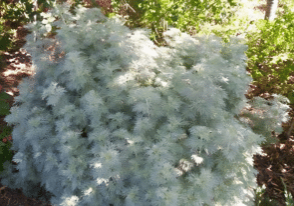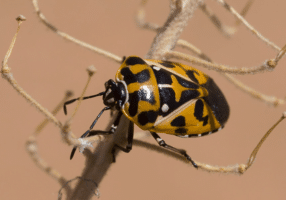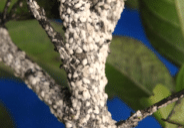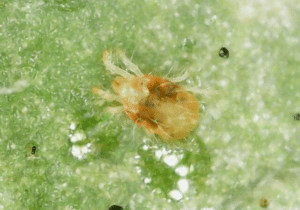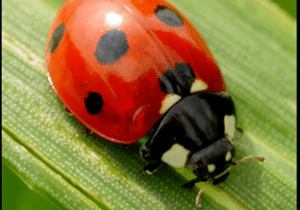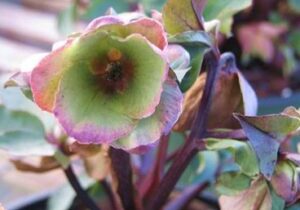By Jesse Pulliam
All of us have seen a ladybug in our garden at one time or another, and that is no surprise. Commonly known as ladybirds or lady beetles to some, ladybugs are insects that can be found on every single continent, with the obvious exception of Antarctica. They thrive in temperate areas, but can also be found in tropical and arid environments. There are over 5,000 known species of ladybugs worldwide, with around 450 of them found in North America alone, the most elusive addition being the enigma ladybug (Allenius iviei). While they are commonly recognized by their red and black colors, each species of ladybug can have its own varying unique coloration, pattern, size, and behavior.
Despite their incredibly diverse appearances, most ladybugs are beneficial predators that feed on aphids and other soft-bodied insects that can damage crops and ornamental plants, making them invaluable for natural pest control. A single ladybug can consume up to 5,000 aphids in its lifetime. They are also an indicator species, meaning they are sensitive to changes in the environment; their absence or presence can help indicate the health of an area’s ecosystem. Though they are not as effective as butterflies or bees, some ladybugs feed on nectar and pollen, which contributes to the pollination of plants.
Overall, ladybugs play a vital role in maintaining the balance of ecosystems, and are considered beneficial insects in agriculture and horticulture. However, there are some insects that take advantage of the ladybug’s favorable reputation among humans, and unpalatable reputation among various predators.
Many species of beetle, such as the mexican bean beetle, the false ladybird, and the asian lady beetle are all striking lookalikes of the true ladybug. The mexican bean beetle is generally more abundant in the western United States, and is hugely destructive to clovers, lupines, alfalfa, green beans, lima beans, and a plethora of others. False ladybirds, on the other hand, are largely harmless, as they feed primarily on fungi, and are only found across most of Europe. These two beetles are often easier to distinguish from true ladybugs, but still could fool the eye at first glance.
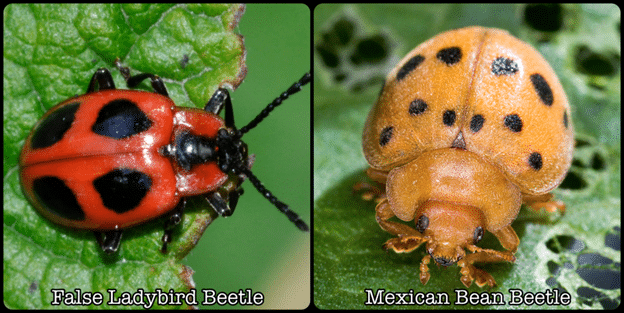
A much more remarkably similar impersonator is the asian lady beetle. Though they originated in eastern Asia, they are now found throughout the world, and are considered an invasive species in some regions. They are sometimes referred to as the pumpkin ladybird, harlequin beetle, or the Halloween beetle, as they often begin invading homes around Halloween to escape the colder weather in some regions.
The asian lady beetle–much like the true ladybug–feeds on aphids and similar pests, which is why they were introduced into the United States in the 1910s and 1960s, and have had a large impact on keeping the population of aphids down; unlike the true ladybug, they tend to migrate into indoor locations to escape cold weather, and are far more likely to bite if they feel threatened. While these bites are generally harmless–as these beetles are not known to carry disease–no one likes to be bitten, and some people experience an allergic reaction to these bites.
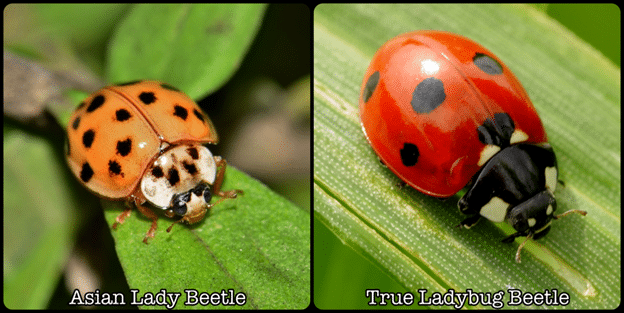
Although they can be difficult to correctly identify because of the vast variation in appearance, there are often telltale traits that you can use. The most reliable method is focusing on the pronotum (the plate that covers the thorax, which is connected to the head); asian lady beetles not only have much more white coloration on the pronotum, but the pattern often creates a vague–or sometimes very distinct–black “M” or “W” shape. True ladybugs do not have this characteristic, which makes this marker the quickest avenue to recognize the difference; while true ladybugs often do have less black spots on their shells than the imposters, spot patterns and shell hue can only get you so far, as there is too much visible variety between the differing species of asian lady beetles, and also the many species of ladybugs themselves to reliable tell them apart.

Ladybug impersonators are incredible examples of Batesian mimicry in nature, wherein organisms have deceptively similar color patterns to noxious creatures. True ladybugs are often avoided because of these noxious qualities; not only do they taste bad, but they are even toxic to some potential predators. Their bright coloration alerts birds, frogs, and lizards to keep away. Mimics who look similar enough may take advantage of this protection–though they are not toxic themselves–and this passing resemblance often wards off danger.
Ladybugs and their impersonators play intriguing roles in our ecosystems, and while some predators can’t spot the difference, we certainly can. Not only can this help us appreciate the complexity of mimicry in nature, but can help better protect our ecosystems. So, next time you spot a ladybug, take a closer look. It just might be a clever disguise.

